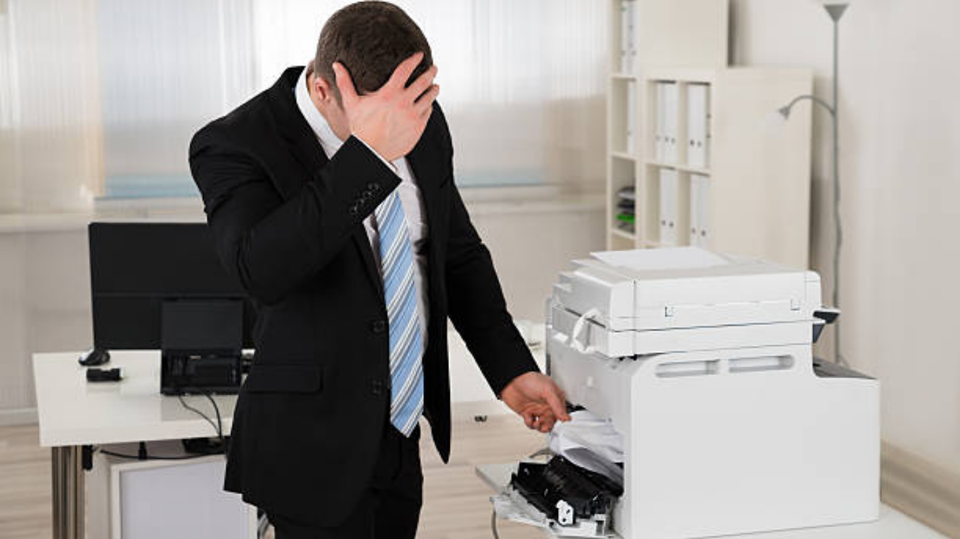
In today's increasingly digital world, printers remain indispensable. Whether in a home office or a corporate environment, the ability to print documents efficiently is essential. But despite the advances in plug-and-play technology, many users still encounter a frustrating error message: "Printer Installation Failed." This issue can halt productivity, cause confusion, and in many cases, arise due to easily overlooked steps.
This blog provides a clear, step-by-step overview of the most common reasons behind printer installation failures and how to address them. It doesn’t promote any service or support; instead, it offers purely educational content designed to empower users with knowledge.
Understanding the Error: What Does "Printer Installation Failed" Mean?
When the system fails to complete the installation of a printer, this message appears. It can happen during wired, wireless, or network-based installation attempts. The failure is typically linked to:
Driver issues
Operating system conflicts
Connectivity problems
Incomplete software packages
Permissions or administrative rights
This guide breaks down these possibilities and provides action-based insights.
1. Check Printer Compatibility with Your Operating System
Before diving into fixes, always confirm that the printer model is compatible with your OS version (Windows, macOS, Linux, etc.). Newer printers may not work well with older operating systems and vice versa. Manufacturers often publish compatibility charts—checking this early can save hours.
Tip:
For Windows users, visit Settings → Devices → Printers & Scanners and check if the device is listed.
For macOS, use System Preferences → Printers & Scanners.
2. Ensure the Latest Printer Drivers Are Installed
Drivers act as a translator between the printer and your operating system. Outdated or corrupted drivers are among the most common culprits for installation failures.
Steps:
Visit the printer manufacturer's website.
Search for your specific printer model.
Download the latest driver version that matches your OS.
Prior to installing the latest drivers, remove any outdated ones.
Note:
Always install drivers from official sources only to avoid malware or incompatibility.
3. Perform a Clean Installation
If prior installation attempts failed, remnants of old drivers or partial setups can interfere with new ones.
How to Do a Clean Install:
Disconnect the printer physically.
Uninstall all related printer software.
Restart the computer.
Use a registry cleaner (for Windows) if comfortable, or manually delete leftover files from Program Files or ProgramData.
Reconnect the printer and install the driver freshly.
4. Check USB or Network Connection
Improper or unstable connections often go unnoticed. Always verify:
USB cable is functioning and not damaged.
USB port on the computer is operational.
When using a Wi-Fi printer, the computer and printer must be connected to the same network.
IP conflicts in network setups can disrupt installation.
Use ping commands in Command Prompt or Terminal to test network connectivity with the printer’s IP address.
5. Update Your Operating System
System updates are often required to support new hardware. If your OS is outdated, it might lack the essential frameworks or APIs needed for printer communication.
Actions:
On Windows: Select Settings → Security & Update → Windows Update.
On macOS: Open System Preferences → Software Update.
Once updated, reboot the system and retry installation.
6. Run the Printer Troubleshooter
Most operating systems now include built-in diagnostics tools. These tools can automatically detect and resolve many configuration-related issues.
How to Access:
Windows: Settings → Devices → Printers & Scanners → Click on the printer → Manage → Run Troubleshooter.
macOS: To reset the printing system, right-click in the printer list area and choose "Reset printing system." This will take you to System Preferences → Printers & Scanners.
7. Check Administrative Privileges
Some installations require elevated permissions. If you're using a restricted account, the process might be blocked halfway.
Fix:
Log in with an administrator account.
Select "Run as Administrator" with a right-click on the installation file.
8. Disable Third-Party Security Software Temporarily
Printer setup can occasionally be hampered by firewall or antivirus software. This is particularly common with network printers or when drivers are being downloaded.
Temporarily disable such software during installation and re-enable it once complete.
9. Clear Print Spooler Files
Corrupted spooler files can block installation processes.
Steps for Windows:
Press Windows + R, type services.msc.
Scroll to Print Spooler → Right-click → Stop.
Navigate to C:\Windows\System32\spool\PRINTERS and delete all files.
Restart the Print Spooler service.
10. Use IP Address for Manual Setup (For Network Printers)
Sometimes automatic detection fails due to IP mismatches or DHCP issues.
Manual Setup Steps:
Access your printer’s IP address via its control panel or configuration printout.
In the Windows interface, select Settings → Printers → Add Printer. "The printer I want isn’t listed" → IP address is added.
In macOS, use IP tab under Printers & Scanners → + icon.
FAQs
Why does my printer say 'installation failed' even after driver installation?
It's often due to background services, admin rights, or registry conflicts. A clean install is usually required.
Do I need internet access to install a printer?
For local (USB) printers, internet is not needed. However, for downloading the latest drivers or installing Wi-Fi printers, internet access is essential.
My wireless printer is not detected. What should I check?
Confirm that both devices are on the same Wi-Fi network, check the IP address, and disable any firewall temporarily during setup.
Can multiple printers cause a conflict during installation?
Yes. Having multiple similar models or previously installed printers may confuse the OS. Remove all inactive printers before installing a new one.
Is there a difference between installing on Windows 10 and Windows 11?
Functionally, the process is similar, but UI layout and driver compatibility may differ. Always ensure drivers are Windows-version specific.
Conclusion
Encountering a "Printer Installation Failed" error can be both confusing and time-consuming. However, by methodically addressing the various factors—driver compatibility, system permissions, connection methods, and software cleanliness—the issue can usually be resolved without drastic measures. Armed with the information above, users can navigate this challenge with confidence and clarity.













